- News
- Reviews
- Bikes
- Accessories
- Accessories - misc
- Computer mounts
- Bags
- Bar ends
- Bike bags & cases
- Bottle cages
- Bottles
- Cameras
- Car racks
- Child seats
- Computers
- Glasses
- GPS units
- Helmets
- Lights - front
- Lights - rear
- Lights - sets
- Locks
- Mirrors
- Mudguards
- Racks
- Pumps & CO2 inflators
- Puncture kits
- Reflectives
- Smart watches
- Stands and racks
- Trailers
- Clothing
- Components
- Bar tape & grips
- Bottom brackets
- Brake & gear cables
- Brake & STI levers
- Brake pads & spares
- Brakes
- Cassettes & freewheels
- Chains
- Chainsets & chainrings
- Derailleurs - front
- Derailleurs - rear
- Forks
- Gear levers & shifters
- Groupsets
- Handlebars & extensions
- Headsets
- Hubs
- Inner tubes
- Pedals
- Quick releases & skewers
- Saddles
- Seatposts
- Stems
- Wheels
- Tyres
- Health, fitness and nutrition
- Tools and workshop
- Miscellaneous
- Cross country mountain bikes
- Tubeless valves
- Buyers Guides
- Features
- Forum
- Recommends
- Podcast
feature
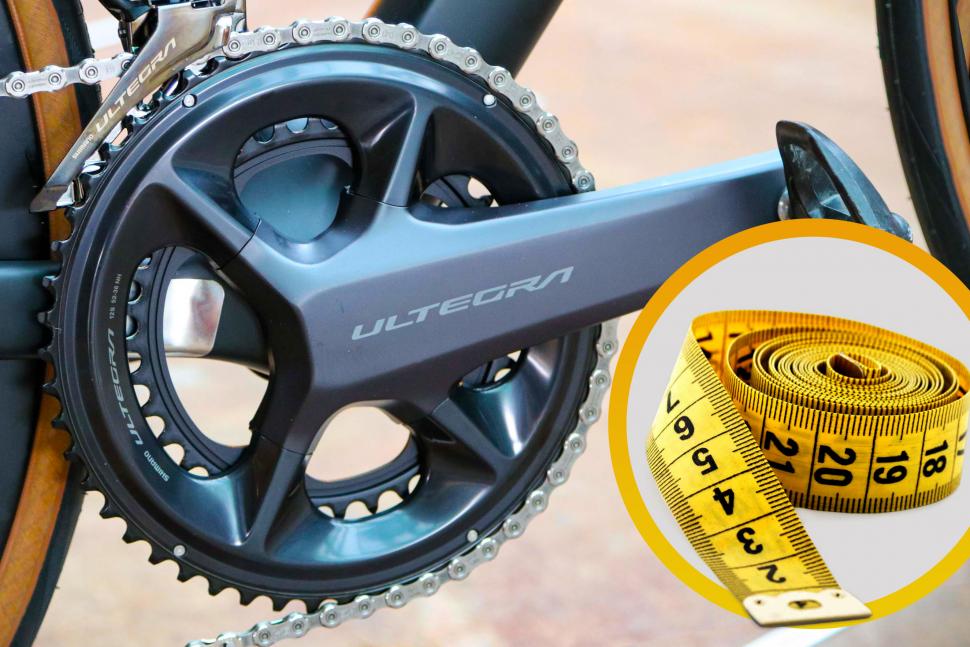 Shorter cranks lead image (road.cc)
Shorter cranks lead image (road.cc)Should you fit shorter cranks on your bike? Find out why bike fitting experts recommend going shorter
As more and more people seem to be talking about crank length on the bike nowadays, we've turned to the experts to see if you too should be using shorter cranks. Bike fit specialists are increasingly recommending a move away from the accepted wisdom of yore, especially for riders with hip issues, time trial riders and anyone who wants to get into a really deep tuck; in fact, many of the best road cyclists in the world are now going shorter, including Lizzie Deignan, Tadej Pogačar and Wout van Aert. Let's find out why...
For decades, the accepted wisdom in road cycling was that male riders of average height should be on cranks that are about 170mm or 172.5mm long. But, in the last few years, a quiet revolution has been underway, as more and more people seem to be talking about crank length with bike fit experts recommending shorter cranks for many riders. Tadej Pogačar switched to 165mm cranks for the 2024 season, his team citing improved efficiency and increased cadence as the main reasons for switching; and in 2025, Wout van Aert and other members of his Visma–Lease a Bike team were spotted with shorter cranks on their bikes.
So, what’s going on?
Some advantages of shorter cranks have long been known. If you don’t lift your knees as high as you pedal, you increase the angle between the bones of the leg, the femur and tibia, and that can reduce the peak load on the knee, reducing the risk of injury. Similarly, shorter cranks open up the angle at the hip. Depending on your riding priorities, that can allow you a deeper tuck for the same hip angle, or a more comfortable pedalling action if you have any hip problems.
But it was long thought that there was a price to pay for all this: shorter cranks meant less leverage and that in turn meant less power.
The crank length revolution
Phil Burt was lead physiotherapist at British Cycling for 12 years and consultant physiotherapist for Team Sky for five years. He now has his own bike fit and physiotherapy practice, Phil Burt Innovation, which has brought him into contact with hundreds of ordinary riders like us, as well as the elite cyclists he used to look after.
> The most common bike fit mistakes and how to avoid them
In his Bike Fit book he writes: “I've had a suspicion that crank length is the elephant in the bike fit studio for a long time and, although we saw the aero benefits of shortening cranks for time trials and pursuit during my time with British Cycling, since working with a wide range of riders I've really seen the impact it can have on both comfort and power production. This almost Damascene realisation … regarding crank length is probably the most significant and impactful thing I've learned since working with a broader range of cyclists.”
Burt explains the research that led to experts like himself taking another look at shorter cranks. Paul Barratt who was the biomechanist at British Cycling and previously head of performance at Ineos Grenadiers, did his PhD with Dr Jim Martin and they were looking at whether crank length was actually relevant to power. "We all grew up believing that if you’re bigger, with longer legs, you need a longer lever, so you can match that to your power. Well, they totally blew that apart", says Burt.
In his book, Burt cites his favourite example: “The analogy I often use with clients is, if you had a one-metre plyometric box and a 15-centimetre step and I offered you £100 to jump onto one a hundred times, which would you pick? Of course you'd want to pedal a smaller circle and shift any problems to your gears rather than your ankles, knees, hips and lower back.”
Phil Cavell, co-founder of London bike fit specialists CycleFit, agrees, explaining that the discovery that shorter cranks don’t affect power, “liberated [bike fitters] because what it meant was that crank length became a function of two things. One is hitting your flexion ranges and the second is your taste, what you like.
“What we find is if someone's got a hip flexion constraint, if you shorten their crank length by 5mm or 7mm they just pedal better, their pedal stroke becomes way more fluid. Their body's not compensating and adapting around this biomechanical constraint so you get more power more evenly in a safer environment. So their knees don’t hurt, and particularly their hips don't get injured.
“So in one sentence, short cranks is very safe and protective of your body. That's the kind of big takeaway there.”
Burt points out that long cranks can actively prevent riders from being comfortable and attaining an optimal pedalling rate. “Quite often people will say to me, I really struggle to get up to 80, 90 cadence. That's because they’re on a massive crank length and it closes the hip up at the top. So it causes discomfort and they wobble around.”
Luke Craddock of Synergy Performance adds: "Crank length is a very hot topic within cycling currently. As a bike fitter who sees around 5-10 people a week, it is definitely a common area we discuss and experiment with. If I was to provide general advice here, cranks are more often than not too long for people.
"The clients I am helping are most likely suffering some kind of discomfort. Discomfort on the bike is due to the body compensating with how it connects to the bike, and the subsequent effect this has on the biomechanics of a rider. Tightness, lack of mobility or impingement within the hip are all common issues that can affect the stability and symmetry of a rider on the saddle. Add in desk jobs and a busy life without time for stretching, and it's likely you would benefit from a shorter crank.
"Ask yourself: Am I a short limb, long torso person for my size? Am I wanting to perform and produce power at an aggressive hip closure angle (like on a TT or triathlon bike)? Do I like to spin a higher cadence to produce power? These may also be pointing towards a benefit for going shorter.
What are the advantages of shorter cranks?
> The things I learnt from a professional bike fit
So, why would you consider moving to shorter cranks? What benefits can they offer?
As well as pro cyclists (the Ineos Grenadiers are known to be keen on speccing short cranks for their riders), one group of athletes that have embraced shorter cranks is the swim-bike-run crowd: triathletes. Burt has looked after British Triathlon's fit process working with the likes of the Brownlee brothers and Alex Yee.
He says, "They found that dropping crank length helped them hold a more aero position and a better position, but when they're transitioning to running, they felt much freer. You can translate that to anybody who’s got a lower back problem.”
Luke Craddock says: In short it [shorter cranks] reduces the closure angle at the hip, which can improve the stability within the pelvis on the saddle as you complete a full rotation of the crank.
"If we can improve a rider's symmetry and overall stability within how they connect with the bike, then the list of benefits can be endless.
"If we can therefore promote a rider to tilt their body forwards then surely there is an aerodynamic benefit as well."
These aerodynamic benefits are well established, and in the lead-up to the 2016 Rio Olympics, Burt says he and Team GB's support squad made the decision to put riders on 165mm cranks.
“Bradley [Wiggins] heard that and said to me ‘I should change.’ And he was on 177.5mm cranks and he dropped down to 170mm in one go, then 165mm the next day. He dropped his front end 30 millimetres and got a three and a half percent drop in CdA [drag coefficient] on the track. That's a man who won the Tour de France right? Well, you wouldn't say he had a bad position would you?”
Dealing with elite riders, Burt says, “you become very risk averse to threatening someone's performance,” but he now says “I'm yet to meet a rider who wouldn't benefit from shorter cranks.”
Of course, it’s not just a matter of a change of cranks, as there will be other adjustments to your position depending on what you’re trying to achieve. You’ll want to raise your saddle to accommodate the shorter cranks, and perhaps your handlebars too, or you might leave them where they are and take advantage of the deeper position you can now achieve.
You might even find your saddle feels more comfortable. “With shorter cranks, peaks in saddle pressure are reduced, and I've seen many riders experience a significant reduction in saddle discomfort by reducing crank length,” Burt writes in Bike Fit.
Signs you might need shorter cranks
What if you think everything’s fine with your current crank length? Is there any way to tell if you might benefit from shorter cranks? Determining how a change in crank length will affect someone isn’t always straightforward, but there are a few telltale signs that can indicate whether shorter cranks might be beneficial. Hip pain or any other hip problem is the big giveaway, but Phil Cavell says there’s a more subtle tell.
“In the absence of any pain or discomfort, what they might find is that as they get to the top of the pedal stroke, their knee is abducting, and that means going to the outside. If one or both knees are moving laterally to the outside, at the top of the pedal stroke that's a sure sign that there's a constraint and a shorter crank might be more comfortable, more efficient, etc," he says.
Cavell also has strong advice for anyone who has a known medical hip condition: “Anyone who's had hip issues, impingement, an accident or an injury, or they've got a family history of hip replacements, or partial hip replacements, all those people should pre-emptively look at a shorter crank.”
> What is the best crank-length for off-road cycling?
Luke Craddock agrees and explains that tightness, inflexibility in the hips, or flaring knees can be signs of compensating at the top of the pedal stroke, and recommends an at-home testing method to see if you could benefit:
"While in your most aggressive yet sustainable riding position you like to use, pedal backwards at a slow 60rpm. If you feel the 12 o'clock part of the pedal stroke is more restricted, harder to access or even impinged than the rest, then absolutely, the benefit could be great. If you are also suffering knee pain, saddle discomfort or lower back pain, this could also be a sign that your crank length needs to be optimised."
What are the disadvantages of shorter cranks?
Switching to shorter cranks typically requires you to pedal faster to generate the same power. This is because shorter cranks provide less torque (leverage), meaning you’ll need to increase your cadence to maintain the same power output. Consequently, shorter cranks won't work for a few riders.
Phil Cavell explains: “Some people have a problem with cadence that they can't lift their cadence from [say] 87 to 91, for whatever reason, then they are going to lose a bit of power. There's no need for them to lose that power if they've got an extremely good hip inflexion range. So if someone’s got a great hip inflexion range, but they do have a tendency to low cadence, why change their crank? The longer cranks are almost certainly going to work better for them.”
If you do switch to shorter cranks, you can expect an adaptation phase as your body gets used to the new position, but it might not take as long as you think.
Cavell adds: “Generally going from 170 to 165, there’s a very short adaptation phase. It can almost be at the end of the [bike fit] session.
“At the end of the session, they're done, they're fine. They’re acclimatised and for some people, it’s an epiphany. They were cycling in pain, they feel discombobulated, they feel uneven and wonky, and then you put them on a shorter crank, and suddenly they can pedal better. So for them the adaptation is really rapid. But for other people it can be a bit longer. If you go from 175 to 165 that can take longer.”
Luke Craddock says: "Apart from the cost, I wish I could sit here and list some counter arguments for why longer cranks would be better, but they would not be true.
"It's a personal preference thing of course, and I don't recommend changing to shorter cranks for every rider I see. Long lever, tall riders with great hip mobility do still come through my fitting studio. The best method is to find a clinical or professional bike fitter who can help guide you through the benefits for you. Everyone is different, and so is the approach or outcome of changing cranks."
So minor downsides, or none at all really according to Craddock. Let’s give the final word to Phil Burt: “Cranks are the most common component I change for riders who come to me for a fit, and the impact is often a game changer.”
Short crank manufacturers
Among the three major groupset manufacturers - Shimano, SRAM, and Campagnolo - both Shimano and SRAM offer road cranksets as short as 160mm, while Campagnolo doesn't list any cranks shorter than 165mm in its current lineup.
> 2024 Sram Red AXS vs Shimano Dura-Ace R9200: which top-tier road groupset is best?
Shimano's top-tier Dura-Ace 12-speed groupsets are available in seven crank lengths of 160, 165, 167.5, 170, 172.5, 175, and 177.5mm, while Ultegra and 105 offer five lengths of 160, 165, 170, 172.5, and 175mm.
Shimano's GRX gravel groupset is currently available only in 170, 172.5, and 175mm crank lengths. However, we’ve been informed that a shorter 165mm crank option will soon be added to the RX610 series of Shimano's 11-speed groupset, though it will not be available in the most recent 12-speed lineup yet.
SRAM has also jumped on the trend towards shorter cranks, offering 160mm options in their top-tier Red groupset, as well as in the lower-tier Rival groupset. Additionally, SRAM provides 160mm cranks for their gravel groupset, Apex. SRAM's Red groupset is available in crank lengths of 160 to 175mm, while Force offers lengths from 165mm to 177.5mm.
Campagnolo, the oldest of the three major groupset manufacturers, offers its Super Record Wireless groupset in only four crank lengths: 165mm, 170mm, 172.5mm, and 175mm.
However, there’s a bit of a difference between what’s listed on manufacturer's websites and what you can actually buy. 165mm cranks are reasonably easy to find, but smaller riders who might want to switch to 160mm cranks (a size Burt says is “completely appropriate” for smaller riders, who tend to be more women than men) may find it harder, though this is gradually improving.
Shorter cranks are available from smaller manufacturers who specialised in solving fit problems or are addressing the triathlon market. Rotor Aldhu cranks, for example, come in lengths as short as 150mm, while if you want something a bit less spendy FSA Gossamer cranks are available in lengths of 155mm. For those looking for ultra-short options, Jcob cranksets, designed by John Cobb, offer lengths down to 145mm.
Conclusion
While shorter cranks may not be ideal for everyone, many cyclists could benefit from them. Experts highlight several advantages of using 165mm cranks (for a typical adult male rider):
- They enable a deeper, more aerodynamic riding position for sprinters and time triallists
- They allow more fluid, comfortable pedalling
- They can reduce or eliminate lower back, hip and knee pain
- For triathletes the transition from cycling to running becomes easier
- Shorter cranks can make your saddle comfier
What crank length do you use? Let us know in the comments section below.
Emily is our track and road racing specialist, having represented Great Britain at the World and European Track Championships. With a National Title up her sleeve, Emily has just completed her Master’s in Sports Psychology at Loughborough University where she raced for Elite Development Team, Loughborough Lightning.
Emily is our go-to for all things training and when not riding or racing bikes, you can find her online shopping or booking flights…the rest of the office is now considering painting their nails to see if that’s the secret to going fast…
Latest Comments
- Bungle_52 6 min 23 sec ago
No they do tell me. This was for my latest close pass....
- mark1a 10 min 25 sec ago
Give it time, somebody will probably shoehorn Brexit in somehow.
- slc 59 min 2 sec ago
I'm really not sure. It was always a road I used on the bike because it is a fair bit quieter than the alternatives. There is often poor driving in...
- mdavidford 1 hour 34 min ago
Bonus video, and a police driver: https://www.bbc.co.uk/news/articles/c98yr0z9r1ro
- mdavidford 2 hours 12 min ago
I think you intended this link: https://www.oxfordmail.co.uk/news/24919319.calls-made-widen-busy-didcot-......
- bobbinogs 2 hours 19 min ago
The police down here in Devon just keep it simple, no updates whatsoever about submitted footage. It does leave me wondering if I should bother or...
- Simon E 2 hours 22 min ago
Nothing is free in the world of business, you'll be paying for it somehow.
- brooksby 2 hours 49 min ago
All because they wouldn't be allowed to rat run through a couple of roads?? Someone really needs a sense of perspective...
- Rome73 2 hours 58 min ago
Regarding the stripped frame photo. Whoever left a TERN GSD locked up outside is nuts. That'll get nicked for sure.
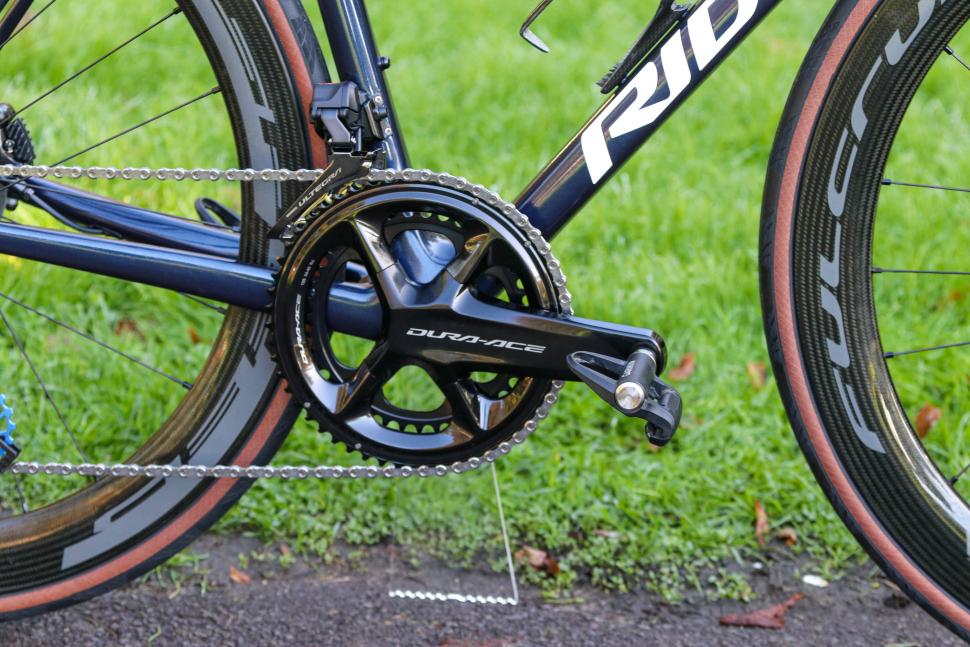
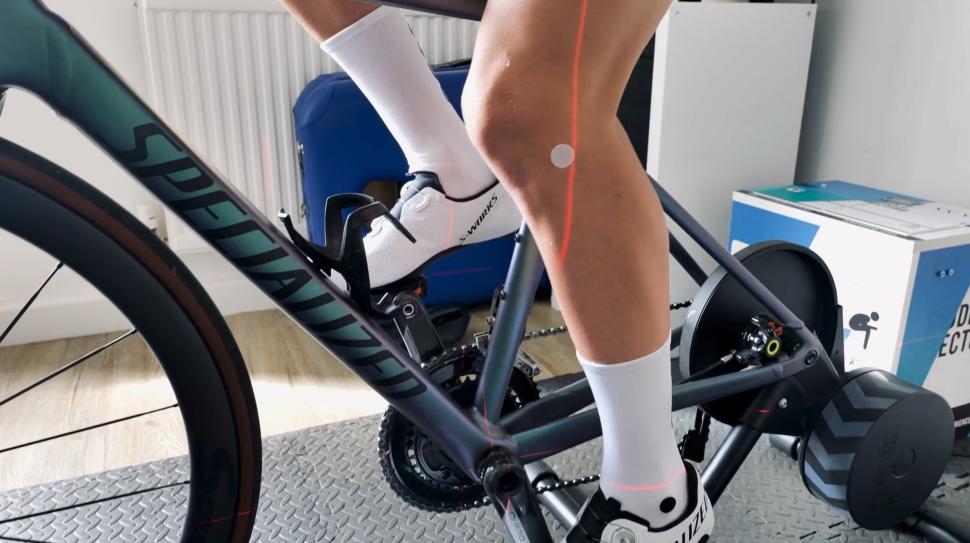
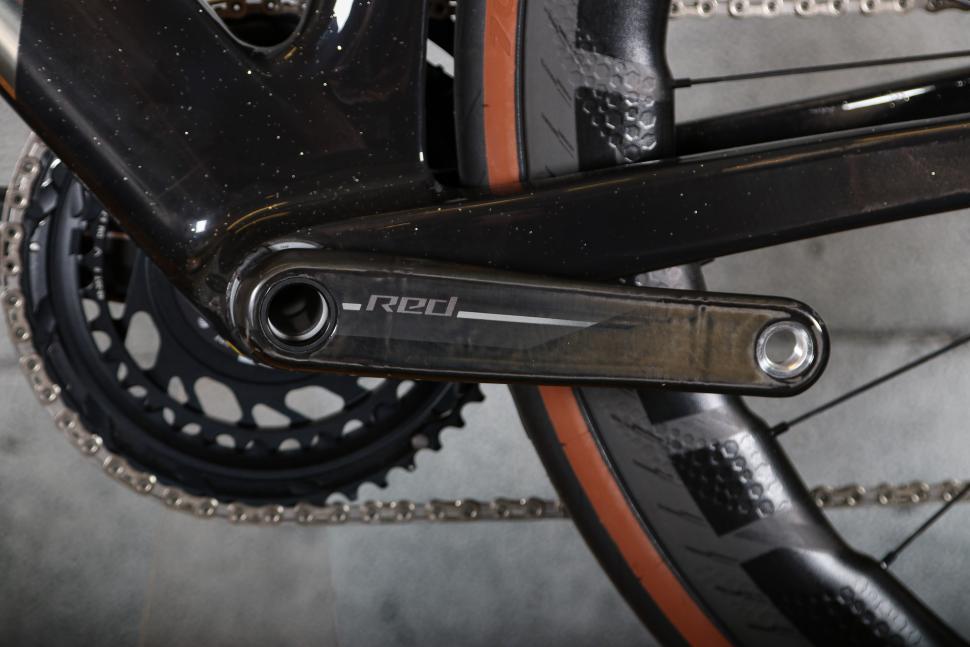
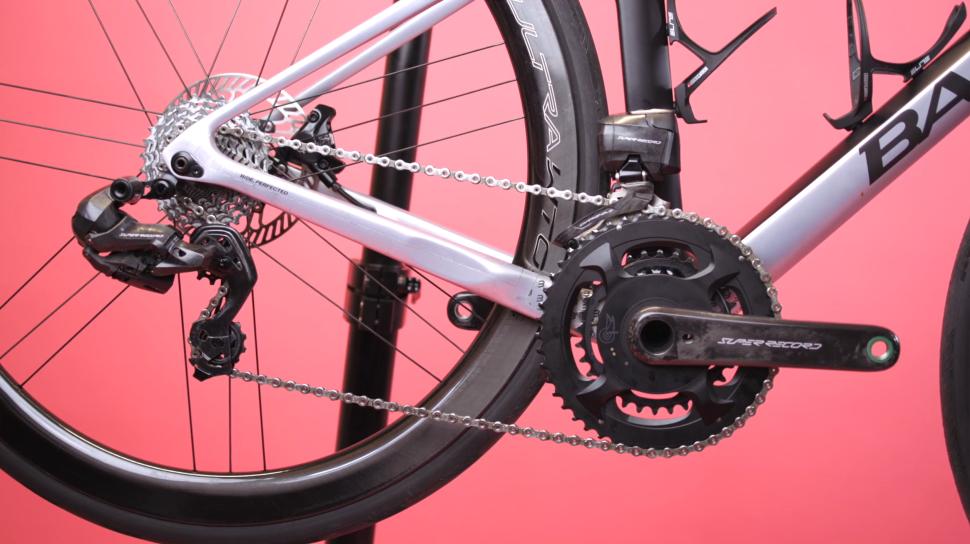
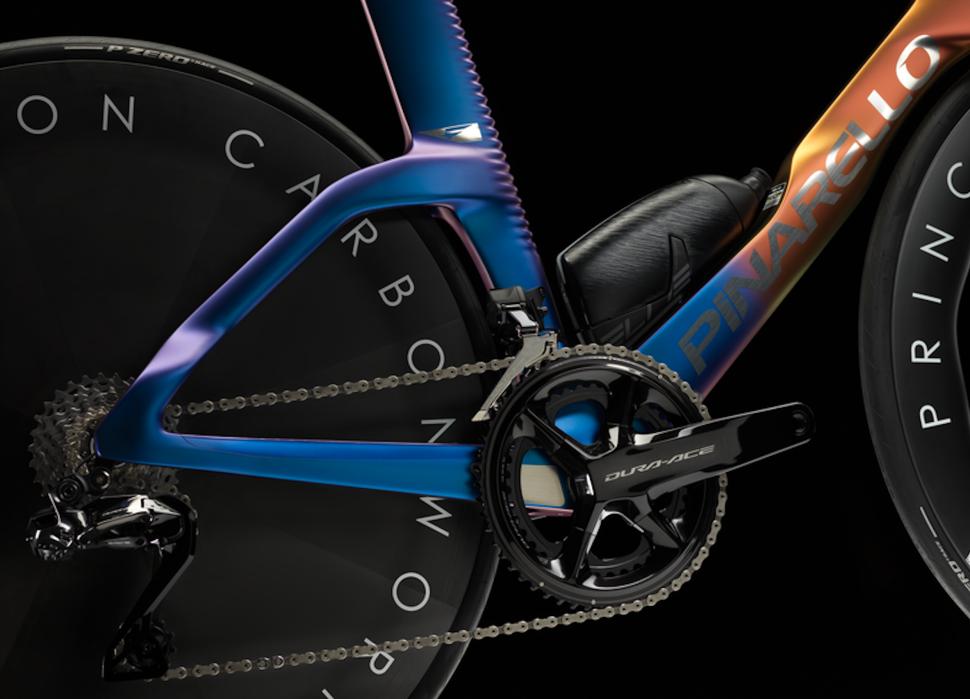
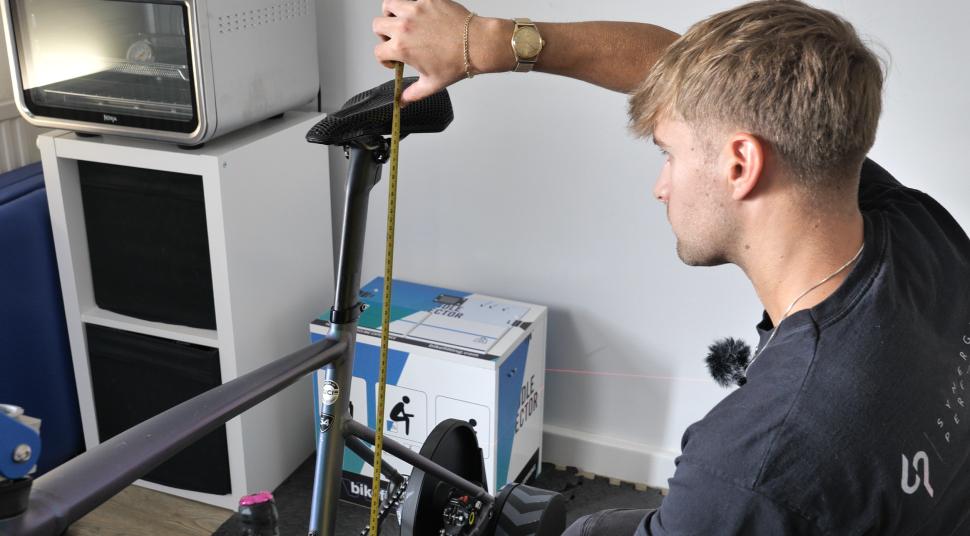
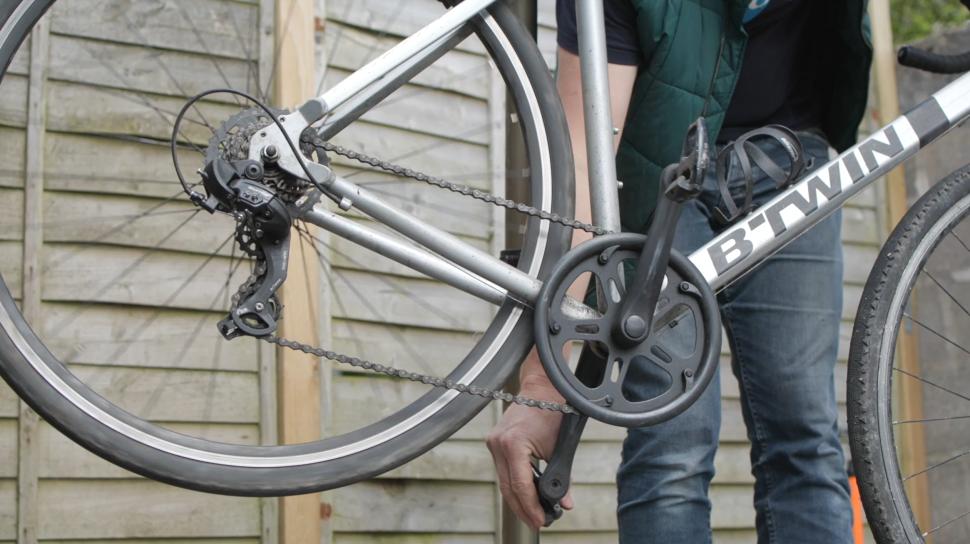
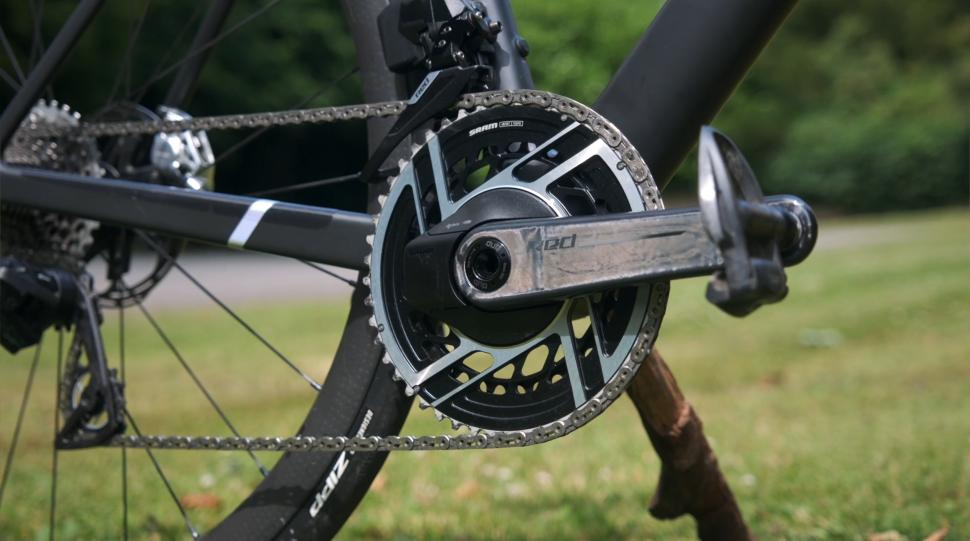
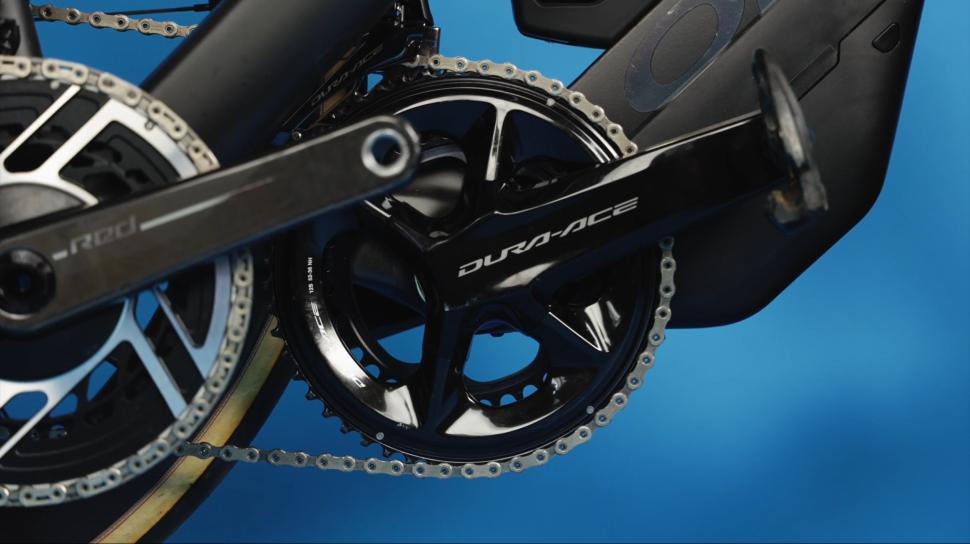

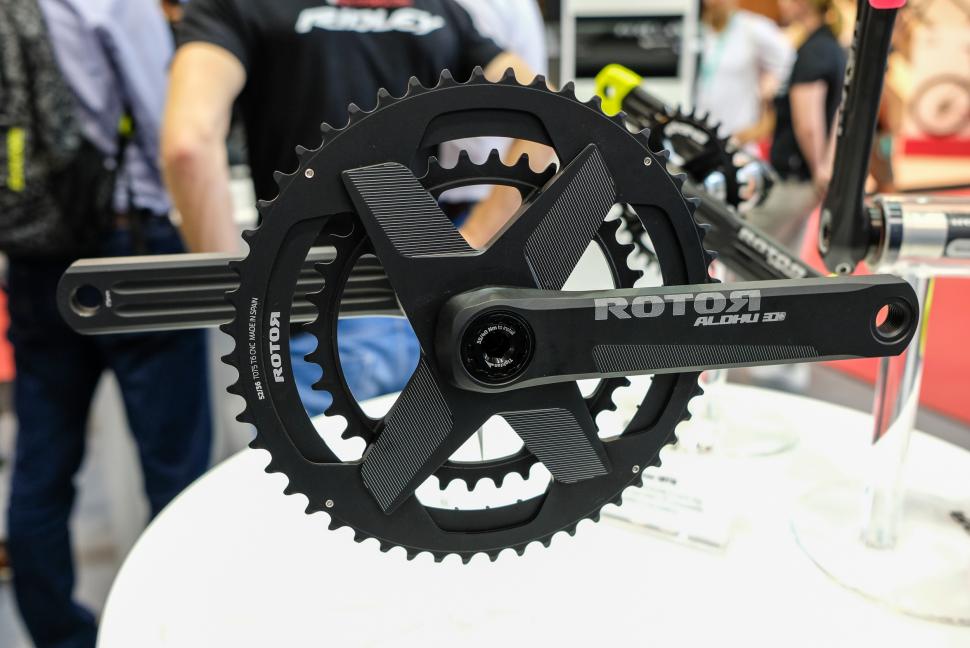
Add new comment
50 comments
All my bikes have 170s, because that was standard in the 60s, 70s and beyond. I am now only 5' 9", so I suspect that I ought to have shorter ones. However, I find it difficult to believe that I could detect a 3% difference.
How did your legs get shorter?
Perhaps they've given up wearing platform shoes?
Maybe someone stuck all their stuff to the ceiling.
If you have lost height it will almost certainly be due to ageing curvature/compression of the spine, it's highly unlikely that your legs have got any shorter and so your cranks don't need adjusting on that account. Although clearly lots of people can tell the difference – or think they can - between crank lengths I agree with you that I don't think I could really notice a 5 mm difference; certainly on the rare occasions I borrow Mrs H's road bike I don't notice any difference between my 172.5 mm cranks and her 167.5 mm (SRAM) ones.
Pedantically (moi? surely not!), they may well have got marginally shorter - just not likely anywhere near enough to justify a change of crank length.
There is no mention in article about situations like starting from zero speed and climbing out of saddle with low cadence. With shorter cranks in that situations you should put more pressure on pedals because of shorter leverage.
When I ride in the city, with many stops and starts in traffic, manoeuvres on low speed, it's significant amount of time I spent to achieve high cadence. So I prefer longer 170 mm cranks. I tried 165 and 160 mm cranks and I noticed that I should produce more power to press the pedals on starts and after long day I felt more pain in feet and more fatigue in quads.
Can't that be resolved with different gearing though? (Smaller chainring)
I've been riding 170s on the road and 165s on the track for 30 years. I've always loved 165s. I'm 1m 84, with short legs and a long back.
I would appreciate some advice.
I came into cycling in my 50s from an athletics background. I have a good cardiovascular system but sometimes feel that I lack power when there is more resistance (course road surfaces, hills) and more torque is required.
My times compare more favourably with other riders when I ride on fast, courses, with smoother road surfaces (more rotational speed, less torque).
My time trial bike has 172.5mm cranks.
This article has got me thinking.
Would shorter cranks be likely to give an improvement?
Impossible to say without seeing your position and riding style, I'm afraid.
I've just invested in a new bike and it's got 165mm cranks, which were both the crank length associated with the frame size but also what my bike fitter recommends. So far I'm loving it. It feels like I can get more power with less effort (which may also be due to it being just a better bike than my old one). And I think I am spinning at a slightly higher cadence naturally than on the old bike too. I'm a 165cm woman with short legs relative to my height, so am obviously the type of person the article refers to; my old bike was a women's-specific design, back when that was a thing, but came with 170mm cranks as standard. Glad things have moved on.
I'm not necessarily asking for advice, just offering myself a kind of case study as I seem to be unusual in some ways. I'm about 5'8"/175cm with long limbs relative to my torso. I ride an older Ridley Noah Pro, a fairly hard-core race bike with a correspondingly aggressive riding position. A riding buddy, a former Continental pro and national crit champion, has been very complimentary about my riding, especially my stroke and cadence, which was around 105rpm at cruise, and has suggested others use me as an example. The interesting thing, though, is that I had been riding on 175mm cranks since I got the bike a few years ago. I had no hip or knee pain, although my thighs did hit my abdomen and interfere with my breathing in a TT position. A new saddle finally let me raise my seat by 5mm (long story, including a cut integrated seat post) about a week ago and and thus go down to 170mm cranks. This has dramatically improved my comfort and breathing in a tuck but I find myself spinning at 110 to 118rpm, which just seems silly, although I'm not bouncing or rocking on the saddle. I can't really say if it's affected my power or speed as I haven't had enough time to assess matters and I'm well off my best form, in any case. (As for a higher saddle meaning one can't touch the ground when stopped, I suggest learning to slide off the saddle. I haven't been able to stand when seated on my bike since I started riding decent road bikes more than 40 years ago.)
What about wheel size? Short crank means higher seat to bottom bracket. Touching down when stopped becomes tricky. Should we go 650B down from 700C?
A few years ago, it was very difficult get shorter cranks. There were (maybe still are) companies who cut down aluminium cranks - had my wife's Mezzo folder crank cut from far too long 170+mm down to 155mm (she's 5' 5" with short legs to torso ratio).
I missed the chance to drop to 165mm when my 2017 Ultegra got recalled and replaced. Just didn't think.
Hmm I am on 175 cranks for 30 years now and I have no problems hitting an average rpm of 87 on a 4 hour ride nor do I have any pain issues. However I just tried 170mm cranks out of curiosity and it just felt better straight away. The difference wasn't huge but I can totally confirm that spinning high cadences is easier and that somehow I am more comfortable on my saddle. Changing the cranks on my 6 Bikes may be expensive though.
What are the sprinters using, short cranks or long cranks? And I don't mean just peloton sprinters: what about the strongest cyclists, I.e the track sprinters? Where is that information?
Depends a bit on type of sprinter. High rev small will want short cranks, track sprinters do sessions with very short cranks spinning at 200 rpm. Big engines like Kittel may want longer cranks. Rory road sprinters, the first battle is riding up to 200 miles of mixed terrain efficiently enough to be able to sprint at the end. No point in cranks that are perfect for your sprint style if you get dropped on every up slope
Of course, the power output is purely determined by the speed, assuming the same bike, rider and terrain. What the human (+/- motor in these enlightened days) has to do to achieve that power output is what is under discussion. In the human case, it's a pretty complicated force/time/movement sum and it's the job of power meter calibration to reliably determine the power ouput produced by the human input. It's not easy to guess what the outcome of changing crank length would be for an individual with a hard-to-specify biomechanical construction and I am perfectly prepared to believe that I personally would produce a given road output on the sort of roads I use with 'less' (less tiring, less damaging, more sustainable for longer rides or for a longer riding life...) input from me (after a period of readjustment) with either a longer or shorter crank than the one I'm using at the moment. It seems unlikely that more than an accidental few of us is at the optimum crank length, and impractical for more than a few of us to find out what it is. It's quite possible that most of us would profit from a shorter crank, and that wouldn't be an unprecedented change- looks what's happened to the general perception of 'acceptable' tyre widths and pressures!
I think all mine have been 170s, because they always were, and I doubt if I could detect a change to 165- so if that becomes the 'usual' I won't mind.
I think you would notice a change - not least in recovery after riding several days in a row. You'll feel less strained in knees, hips, and back
When building my Ultimate Commuter I followed Surly's advice to fit a shorter crank when using 27.5 wheels and fitted 165s (Middleburns, of course) as they say it lessens the chance of pedal strikes.
With limbs to short for my back (or a back to long for my limbs) I'm as aerodynamic on flats as I am with drops. I use 162.5 TA on my old Trek 950 MTB and 152.5 Stronglight on my Giant hybrid.
Raising the seat to compensate took a lot of angular motion away from the knees, especially on the Giant.
Hah. My son and I are same height, 180 cm. My legs are nearly 100mm longer than his. He's a natural swimmer, brilliant butterfly. I swim a lot but legs just want to sink. I could ride his bike uncomfortably. He could never ride mine
Surely this statement is wrong?
"You’ll want to raise your saddle to accommodate the shorter cranks"
You'll want to lower your saddle as with a shorter crank the distance between your foot and hip increases leading to hyper-extension of the knee?
At the bottom of the stroke your hip-foot distance will be shorter since the pedal will not go as low as before, less extension, so you'd want to raise the saddle to restore the status quo. At the top of the stroke the flexion would be less, but that's not so much of an issue, your leg is just less bent at the hips and knees.
However with a raised saddle you could find it difficult getting a toe to the ground when you stop.
I guess in time they could design frames with a lower BB, lowering the CoG whilst solving the toe to ground issue.
All that assumes that maintaining an "optimum" extension at the bottom of the stroke matters. If the benefit of the shorter crank is in the overall reduced range of leg excursion, perhaps leaving the saddle height unchanged is best.
Sorry. Been saying that for a few years and replied before scrolling down to your perfect comment
My first adult bike had 160mm cranks AFAIR, possibly less. It was my father's, which he got just after or just before the War. 26" wheels, 4-speed Sturmey-Archer hub. The big difference when I got a newer bike was the bottom bracket, which was much higher -- to avoid road strike because of the longer cranks. My mother's was the same: short cranks, low bottom bracket. Made for a very stable ride and no problems touching down.
Plus ça change?
No. Bottom of stroke rises. To get perfect leg extension, have to raise saddle. Which affects how you put your foot down when stopped... which raises questions of smaller wheels, eg 650B
What bugs me about this subject is the idea of fast twitch vs. slow twitch is never mentioned, and I being of the slow-twitch flavor, feel that's an important factor to consider. It certainly plays into my success with longer cranks. Spinning, like sprinting never came easy to me even with shorter cranks. So I respectfully disagree with the bigger brains than I and don't feel you can paint with a broad brush that everyone needs to spin at 80-90 rpm. For me it's always come back to 60-75 rpm, for miles, upon miles, upon miles that allowed me to turn in 25 mile TTs in the low 52 minutes.
Pages